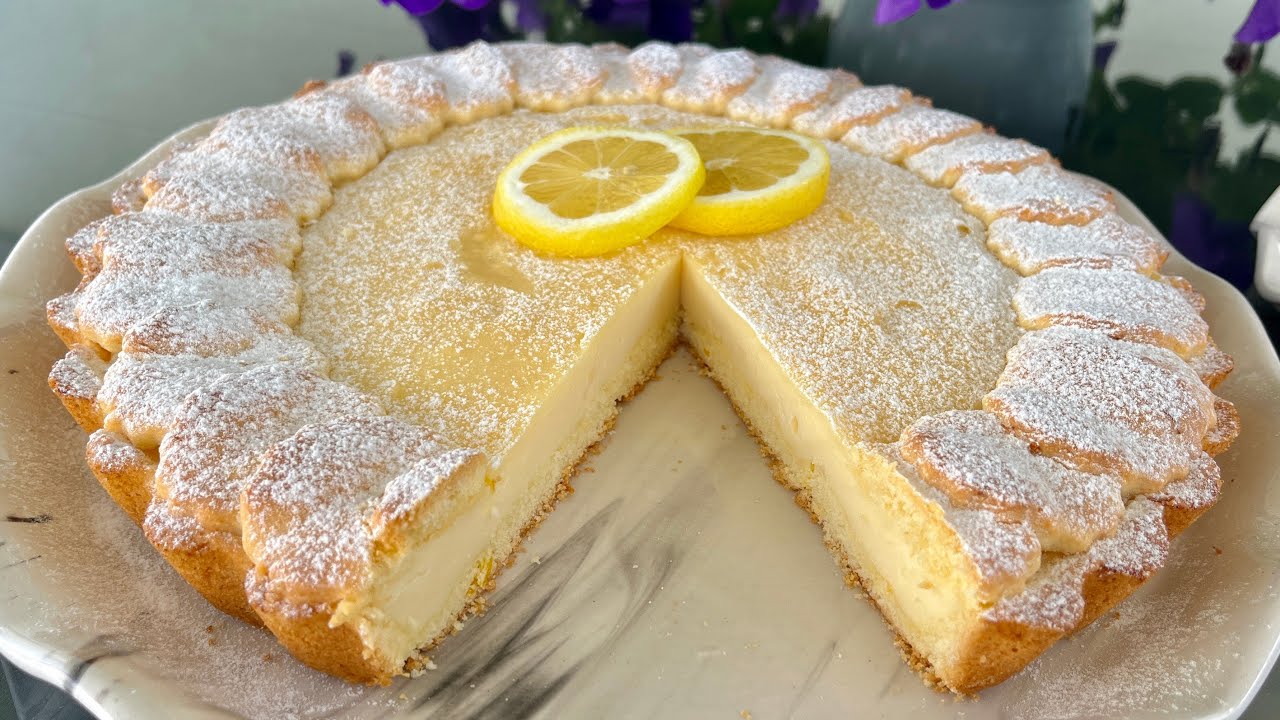 Pin it
Pin it
This buttery Italian pine nut tart carries the warmth of grandmothers' kitchens across generations. The combination of delicate pastry and silky vanilla custard creates a dessert that feels both homey and elegant at once.
I first encountered this tart at a small family bakery in northern Italy while traveling as a culinary student. The baker noticed my fascination and generously shared her method, which I've treasured and refined over years of making it for my own family gatherings.
Ingredients
- All purpose flour: Creates a tender yet sturdy crust foundation that holds up to the custard filling
- Cold unsalted butter: Provides essential flakiness and rich flavor in the pastry
- Egg yolks: Enrich both the dough and custard for a luxurious mouthfeel
- Whole milk: Gives the custard its silky texture. Use full fat for best results
- Vanilla bean: Infuses the custard with delicate aromatic flavor; worth the splurge over extract
- Pine nuts: Offer a distinctive nutty flavor and textural contrast. Toast them lightly before baking for enhanced flavor
- Granulated sugar: Balances sweetness without overwhelming the delicate vanilla notes
- Cornstarch: Thickens the custard to the perfect sliceable consistency
- Powdered sugar: Finishes the tart with a delicate sweetness and visual appeal
Step-by-Step Instructions
- Prepare the Pastry:
- Begin by combining your dry ingredients in a large bowl. Work the cold butter in until you achieve pea sized crumbs; this ensures flakiness in the final crust. The key is keeping everything cold, including your hands. Add egg yolks and milk gradually until the dough just comes together. Dividing and chilling the dough allows the butter to firm up again, creating those lovely layers in the baked crust.
- Create the Custard:
- Heating the milk with vanilla is where the magic starts. This infusion develops deep flavor that makes this tart special. When tempering the eggs with hot milk, pour very slowly while whisking constantly to prevent scrambling. During cooking, keep your heat moderate and stir continuously, focusing on the bottom and edges of the pan where scorching happens first. The custard is ready when it coats the back of a spoon and holds a line when you run your finger through it.
- Assemble with Care:
- Roll the first dough disc between parchment paper to prevent sticking and ensure even thickness. Transfer it carefully by draping it over your rolling pin, then unrolling over the pan. Press gently into corners without stretching the dough, which causes shrinking. Spread cooled custard in an even layer, leaving a small border around the edge. The top crust should be rolled slightly thinner than the bottom for proper baking.
- Bake to Golden Perfection:
- Position your rack in the middle of the oven for even heating. The egg wash creates that beautiful golden shine while helping the pine nuts adhere. Watch carefully during the final 10 minutes as pine nuts can quickly go from golden to burnt. The tart is done when the crust feels firm and the center has just a slight wobble.
- Cool and Serve:
- Allow the tart to cool completely before removing from the pan to prevent breaking. This resting period allows the custard to set fully and flavors to meld. A fine mesh sieve helps apply powdered sugar evenly for that professional finish.
This recipe reminds me of Sunday afternoons at my grandmother's table, where dessert wasn't an afterthought but the culmination of a meal shared with love. The pine nuts were always my favorite part, and I would save the edge pieces where they clustered most generously for myself.
Storage Tips
This pine nut tart keeps beautifully at room temperature for up to 2 days covered loosely with a clean kitchen towel rather than plastic, which would soften the crust. For longer storage, refrigerate for up to 5 days, but always bring to room temperature before serving to allow the flavors to bloom fully. The custard will not freeze well, so I recommend enjoying it fresh.
Regional Variations
Throughout Italy, you'll find wonderful variations of this beloved tart. In Rome, bakers often incorporate ricotta into the custard for added richness. Tuscan versions might feature orange zest and a splash of dessert wine in the filling. In Sicily, you might find chopped pistachios mixed with or replacing the pine nuts. Each region claims their version as the definitive one, but all share the same comforting spirit.
Serving Suggestions
For an elegant presentation, slice the tart and plate individually with a small dollop of lightly sweetened whipped cream and fresh berries on the side. A light dusting of powdered sugar just before serving refreshes the appearance. At family style gatherings, I simply bring the whole tart to the table on a wooden board with a small bowl of seasonal fruit alongside.
A tart like this is both an indulgence and a connection to tradition—savory, sweet, and unforgettably delightful.
Frequently Asked Questions
- → How do I make the pastry dough flaky?
Ensure your butter is cold when incorporating it into the flour mixture. This helps create flaky layers as the butter melts during baking.
- → Can I use vanilla extract instead of vanilla bean?
Yes, you can substitute 1 teaspoon of vanilla extract for the vanilla bean. Add it after heating the milk.
- → What is the best way to avoid curdling the custard?
To prevent curdling, slowly pour and whisk the warm milk into the egg mixture. Stir constantly when cooking the custard.
- → Can I use a different nut topping?
Yes, feel free to substitute with almonds, pecans, or walnuts if pine nuts are unavailable or preferred.
- → How should I store the custard cake?
Store the cake in an airtight container in the refrigerator for up to 3 days. Serve at room temperature for the best flavor.
